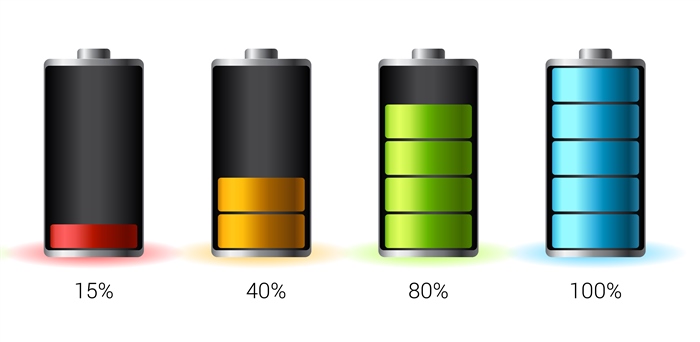
A battery gauge is essential in most modern systems to help determine how much power a given system can draw from the battery pack. Whether batteries are the system’s primary or backup power source, in most systems reliably operate on. In most cases, it is not very straightforward to estimate the amount of capacity in battery packs. Depending on the system, there are various factors that need to be understood when selecting the appropriate battery gauge.
A multicell battery refers to more than one series cell in the battery pack. You’ll find multicell battery packs in notebook computers, drones, portable medical equipment, server backup systems and industrial applications.
Some of the most common factors to consider when choosing a multicell battery gauge are cell type and chemistry, number of series/parallel cells and charge/discharge currents, system or pack side.
Let’s take a look at each factor in detail.
Cell type and chemistry
Cell type and chemistry refers to whether it is a primary cell (not designed to be recharged) or a secondary cell (rechargeable cell), and the type of chemistry used in the cells, such a lithium-ion or lithium-ion phosphate (LiFePO4). Typically, the gauging method for primary cells can be quite different from the method used for rechargeable cells. For primary cells, the gauge does not have to keep track of the number of cycles (charges and discharges) since these cells are not rechargeable. Different algorithms have been optimized to work with either primary or secondary cells. Compensated end of discharge voltage (CEDV) gauges typically work better for primary cells (like in the bq35100), while Impedance Track™ gauges work better for secondary cells (like in the bq40z50-R1).
Cell chemistry plays a significant part in the algorithm used for gauging; for example, a lead-acid battery will have to be gauged quite differently than a LiFePO4 battery. Gauges that work independently of battery series cells like the bq34z100 or bq34110 are better for lead-acid cells, while the bq40z50-R1 or bq28z610 are better for LiFePO4 cells.
Number of series and parallel cells and system load
The number of series cells plays an important part in battery-gauge selection. For certain cells, each individual series cell voltage may need monitoring.
The gauge should also be able to handle the capacity of the battery pack, which is determined by the number of parallel cells. For large-series cell counts, gauges like the bq34z100, or the bq78350-R1 will be appropriate, as an external resistor network can divide the voltage down for input into these gauges. For two- to four-series connected Lithium-based cells, the bq40z50-R1 is preferred, because it can monitor individual cell voltages and will result in more accurate gauging performance.
Depending on the system load, the gauge should be able to measure the discharge and charge current dictated by the system.
System- or pack-side gauge
System-side gauges are integrated into the system; the cells are usually replaceable. Pack-side gauges are gauges integrated into the battery pack that track the health and state of charge of the cells they accompany.
Pack-side gauges will incorporate a gauge for each of the battery pack for rechargeable cells, but provide much better accuracy over the life of the pack. For primary cells or where the battery pack is very cost-sensitive, a system-side gauge will be the better option. CEDV (bq4050) gauges are the better choice for system-side gauges since the gauge will not be required to keep track of the impedance and charge/discharge cycles run on the cells and Impedance Track™ technology-based gauges (bq40z50-R1) are a better choice for pack-side gauges as it can keep track of the impedance and cycle count on the cells and provide more accurate state of charge.
TI’s battery fuel gauge product page helps use the criteria I’ve described in this post to recommend the best battery gauge that will work for an application. What applications would you like to see gauges designed into in the future?
Additional resources:
- Learn more about working with gauges in this blog series: How accurate is your battery fuel gauge?

-

Vlad Blanshey
-
Cancel
-
Up
0
Down
-
-
Reply
-
More
-
Cancel
Comment-

Vlad Blanshey
-
Cancel
-
Up
0
Down
-
-
Reply
-
More
-
Cancel
Children